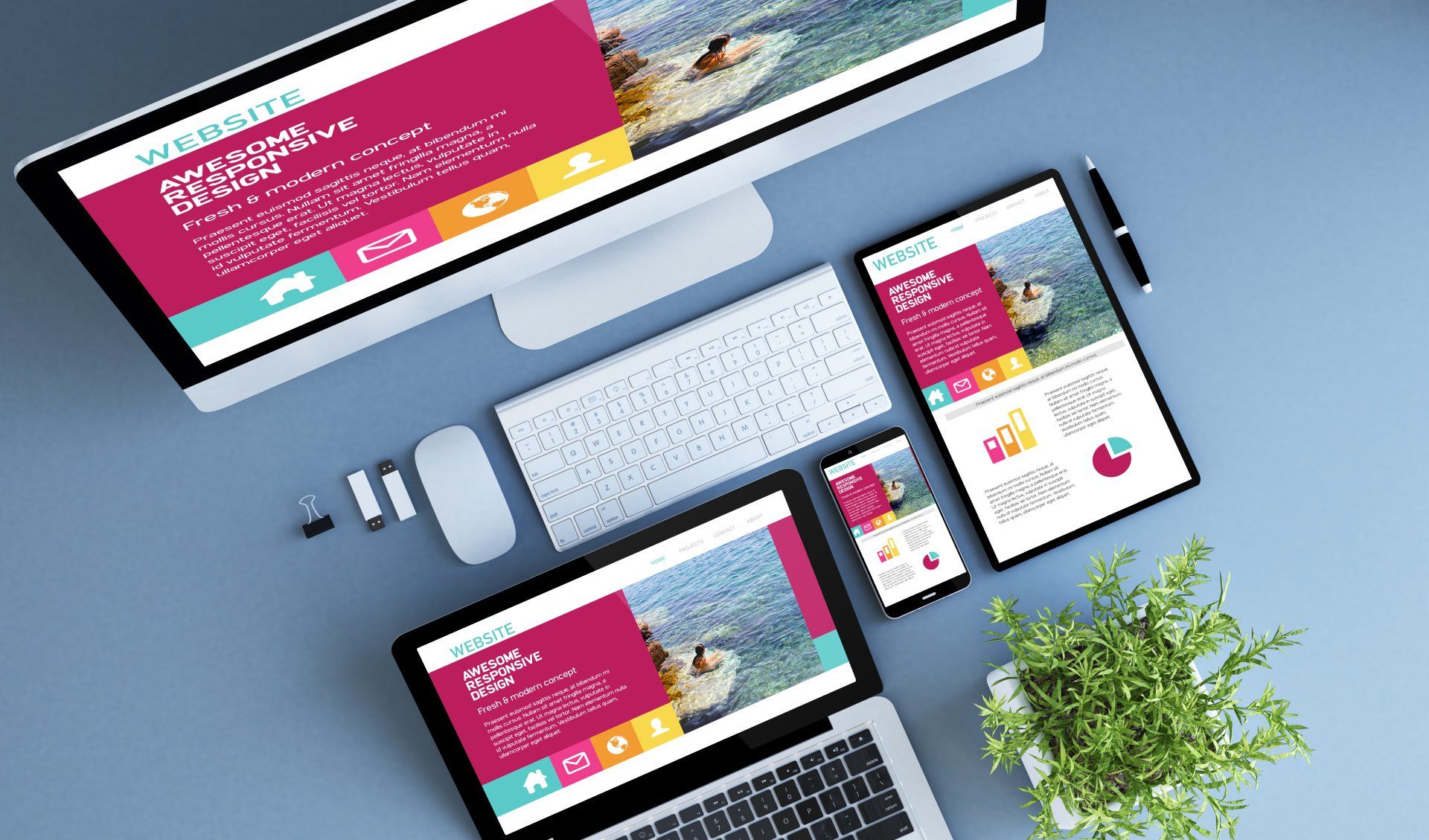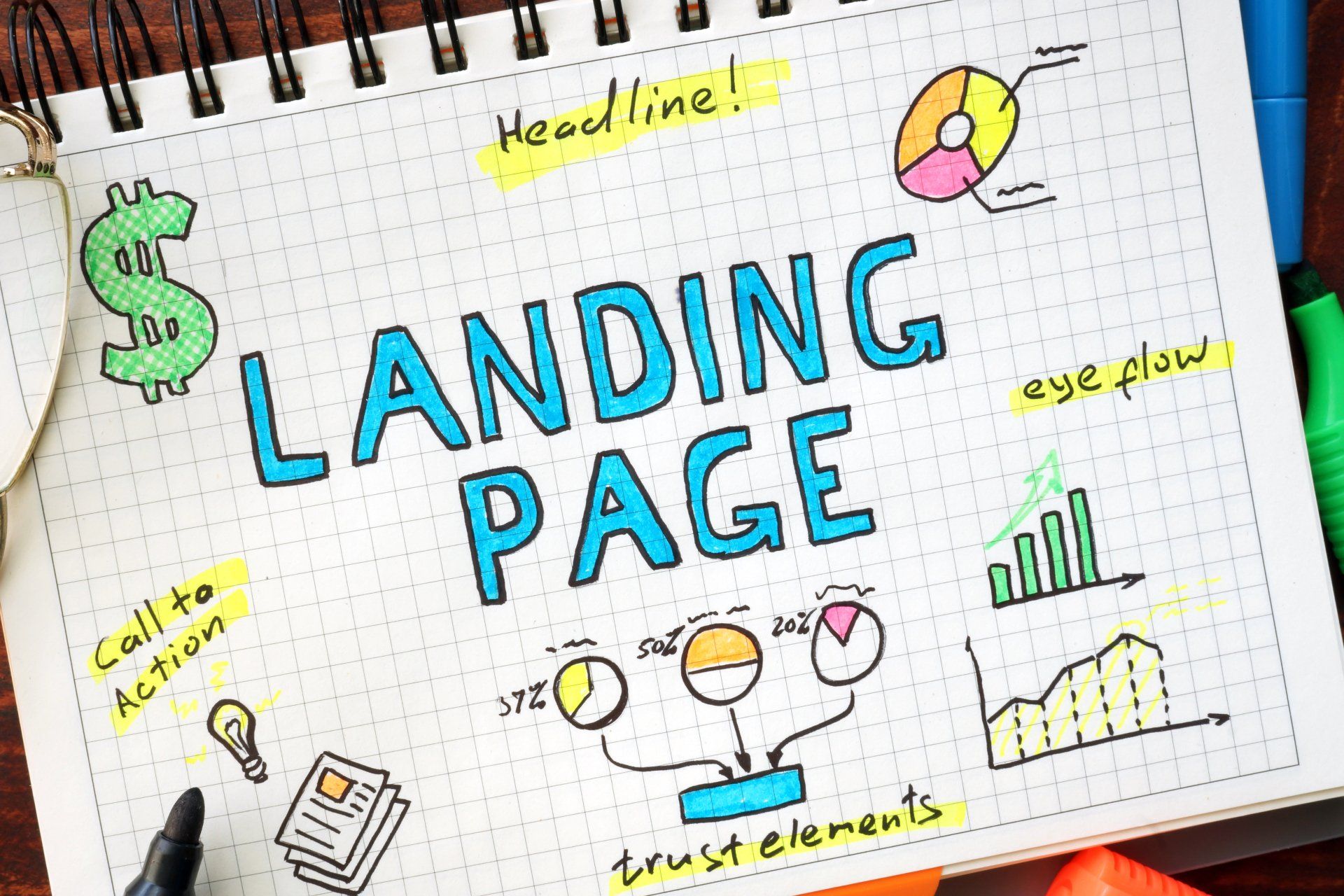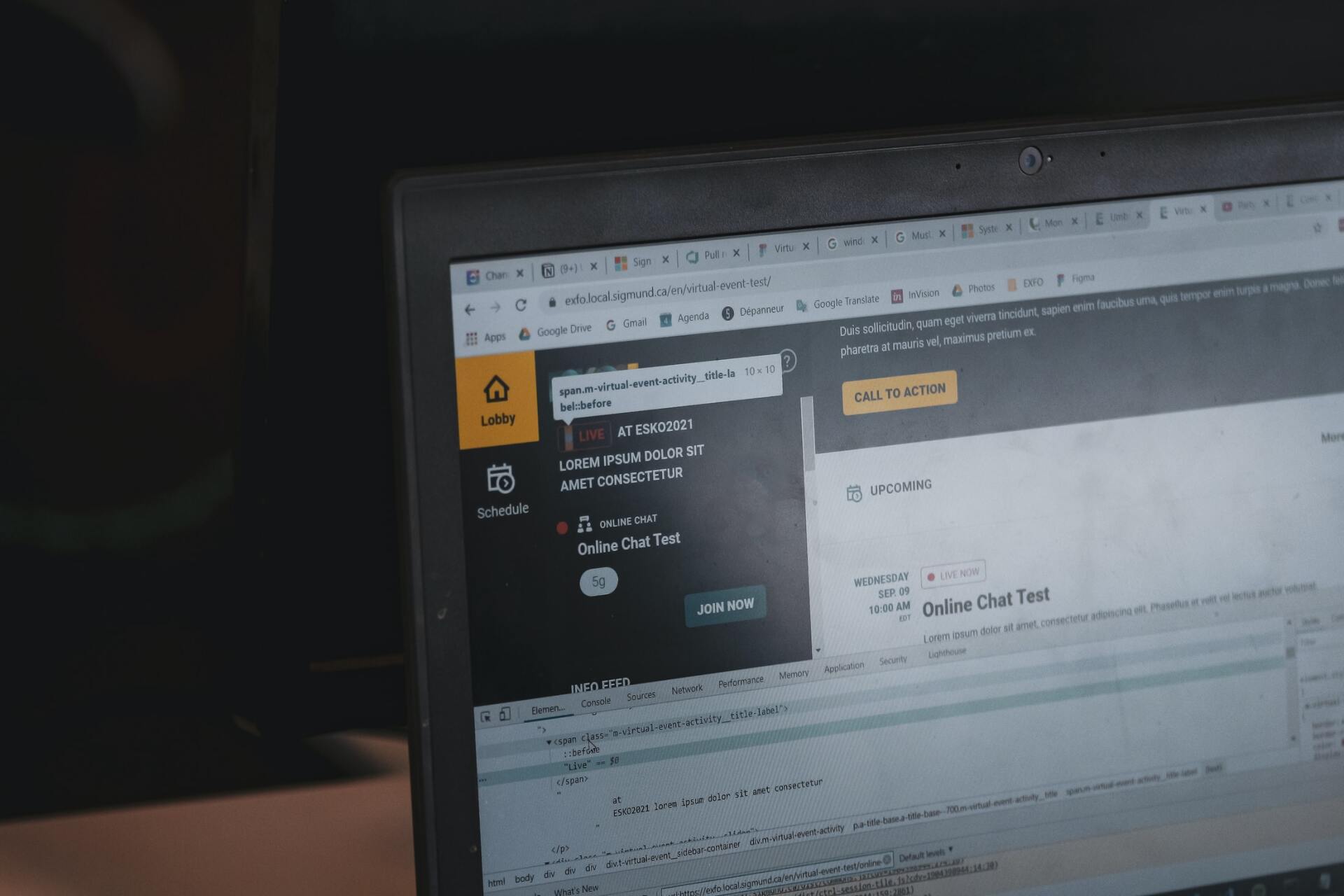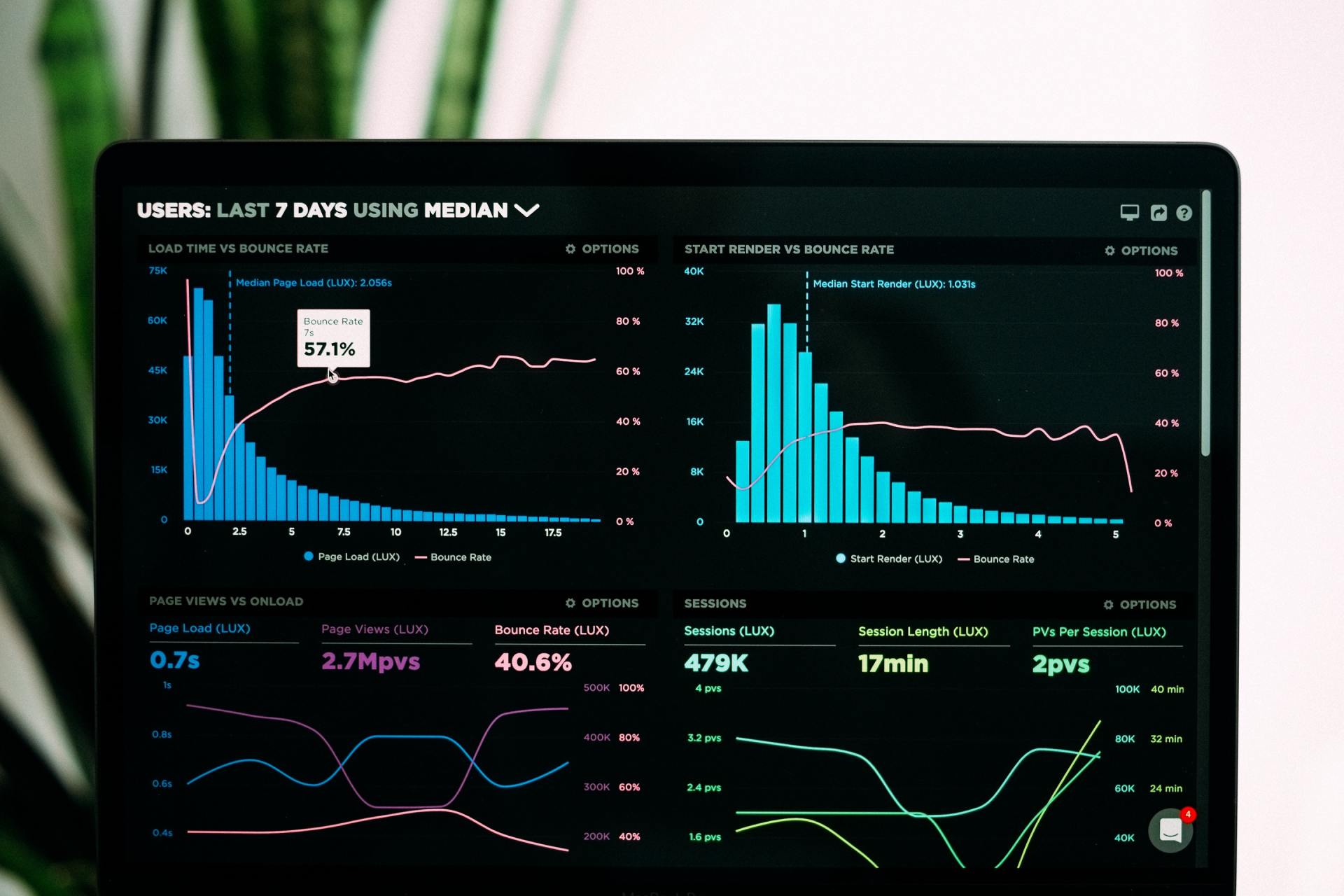What are landing pages and how do they work?
A landing page is a page on your website which is specifically designed to convert visitors into leads.
It performs a completely different role to other pages on your site and follows these two fundamental criteria:
- It has a form for you to capture a visitor’s information in exchange for an offer
- Its only purpose is to convert visitors into leads
A landing page has no distractions and no navigation to other pages on your site. It is very clear and easy for a visitor to use and fill in your form. So while a home page might include a form, it isn’t a landing page as it serves other purposes too.
A landing page is an exchange of valuable information and is a win-win both for your business and a prospective customer.
A visitor will fill out the form on your landing page because they are getting something useful from you – that could be an ebook, bonus video content, a how-to guide or something else. And your business is also getting something useful from them – their contact details which you can use for future marketing.

Why your business needs landing pages
- To attract new visitors to your business
- To draw those visitors in by telling your story in a compelling or emotional way
- To convert those visitors into leads
How landing pages work
Landing pages follow a simple and straightforward path:
- Someone see a call to action (eg on your ads or social media) and ends up on a landing page
- They fill in the form on your landing page – so they convert from visitor to lead
- Their information from the form is stored on your leads database
- You market to them based on what you know about them from the form
If you use a marketing automation tool, you will be able to see which offer a visitor (the lead) converted on and when, as well as what other interactions they have had on your site. This valuable information will help you target the lead with the offers, products and services they are most likely to be interested in.
If you show them the right information, your leads are far more inclined to move onto the next stage of your marketing funnel – getting ever closer to become a customer. The better your targeting and the more quickly you can move leads through the marketing funnel, the better the return on your investment will be.
If you don’t use a marketing automation tool (and it would certainly be worth considering using one if you don’t), as a minimum your landing page has helped you acquire a new name and email address for your leads database.
The buyer persona
Before you go on to create your landing page, you need to know who it is for. You should have an ideal customer in mind and the landing page should meet the needs of that customer – the buyer persona.
You can build up a clear picture of your buyer persona through current customer data and any market research you have done. A good buyer persona will give you a clear insight into your customers’ behaviour, their interests and values and how they think. The better your buyer persona, the more able you will be to create content which is valuable to them.
Some businesses may have multiple buyer personas eg if you have a large product range or a number of different price points, but when creating a landing page you should target only one buyer persona at a time.
If you try to make your landing page work for all of the different buyer personas, it won’t appeal to all of them and will decrease your chances of a conversion. By targeting just one persona at a time, you will be much more focused, increasing the chances of conversion.
It doesn’t really matter exactly what the offer is (eg whether it is an ebook, a webinar or a tip sheet), the most important thing is that it meets the need of your buyer persona – solving a problem or ‘pain point’ they are experiencing.
When they set out to solve a problem or make a purchase, a potential customer goes on a journey from research through to the point of buying something. Different offers on different landing pages can be created for every stage of the journey, to help a visitor to become a customer.
- Awareness stage – a visitor is aware of an issue or opportunity, but isn’t quite sure what the problem is. At this stage they are doing research to better understand their issue. Pieces of content to offer at the awareness stage include guides, white papers and ebooks.
- Consideration stage – a person now fully understands the problem or opportunity they are faced with and wants to understand more about how they can solve it. Offers for this stage would include videos and webinars.
- Decision stage – at this stage, they are ready to go ahead with a purchase to resolve their issue. But they haven’t yet decided to use your company or your product. They are looking at a few businesses before making their final decision. Offering case studies, demo videos and product information (especially anything which makes your product unique, such as its environmental credentials) at this stage can help sway the decision-making in your direction.
The conversion process
Landing pages are an essential part of the conversion process, but there are a number of elements that need to work together to ensure a successful conversion.
Calls to action (CTAs) – a call to action is a link that asks your visitors to carry out an action. The link could appear as an image or a line of text. It will most likely be a CTA that brings a visitor to your landing page in the first place – perhaps from your ads or social media. CTAs can and should also be found elsewhere on your website to drive visitors to the landing page, for example from a relevant page on your blog. The more relevant the CTA is to your landing page, the more likely a visitor is to convert.
Once on your landing page, it is another CTA which will tell a visitor what they have to click to access the offer.
Landing page – this is where a visitor fills in a form, giving you the valuable information you need, which means they can access the offer eg ebook, bonus video content or a webinar.
Thank you page – rather than a ‘thank you’ line on your landing page, move your lead onto a dedicated thank you page. This is where they can actually download the offer they have signed up for. It is also an opportunity to continue to engage with them and move them further down your marketing funnel. Can you make a secondary offer available to them at this point, such as case studies or a webinar? These secondary offers should be made through another form.
Putting your landing page together
Although a landing page may appear to be simple and rather brief, it is essential that it includes the right elements to grab the attention of a visitor and stop them form leaving.
- Headline – this needs to be compelling and make your visitor want to keep reading. It is the first thing they will see when they get to your landing page and it has to be interesting enough to ensure it won’t be the last!
- Sell your offer – a visitor needs to see almost at a glance (certainly within a few seconds) whether or not they are interested in your offer. So make it clear, concise and effective.
- A good image – images always catch the eye and make people stop and pay attention, so make sure to include an image which is interesting and relevant.
- No site navigation – make it hard to leave! You want people to focus fully on your offer, so remove any opportunities to get distracted and head for another interesting page on your site.
- Bullet points – because most of us have short attention spans, bullet points make it a lot easier to take in the relevant information without getting bored or distracted. The bullet points should give enough information about your offer to tempt a visitor to convert.
- Testimonials – include quotes, pictures or even videos of people who love your content on your landing page. This will make your page look more appealing and help improve your conversion rate.
The right form for the right time
The form is the most important element of any landing page. Make sure it has a clear and concise instruction to encourage people to fill it out eg ‘To get your ebook, please fill in the form’.
The form will give you the essential information you need from a visitor, but if you ask for too much, you could end up with none at all. Conversion rates drop dramatically if forms have more than three fields, so keep them to a minimum, particularly early in the buyer’s journey.
The key thing to remember when putting your form together is that if you don’t know what you will do with the information you are requesting, you don’t need to ask for it! For example, if you aren’t planning to phone them or visit their website, don’t ask for this information on the form.
When considering a potential customer’s journey, you should ask for different information at different stages. At the awareness stage, you only need their name and email address. That is enough for you to make contact with them in future to nurture the lead.
At the consideration and decision stage, a person is more interested in what you have to offer. As they are further into their buyer journey, they are likely to be more open to giving you more information. This will benefit them in return, as you can better personalise the offers you give to them.
Promote your page
Having put work into creating your landing page, you need to promote it so that people will actually visit it. Some of the best ways to promote your page are:
- Email – send an email to a targeted list of people who are most likely to be interested in your offer and to convert. The text and design of your email can be based on your landing page.
- CTAs – use calls to action on your paid ads or on relevant pages of your own website. The CTA needs to be a good fit with the page on your site, as well as the landing page itself. Position it on relevant blogposts and pages on your site with high visitor numbers.
- Social media – social media is a great way to spread the word about your content and to reach a new audience. Make sure you use the right social media for your buyer persona eg if they are more likely to be on Instagram than Facebook, it isn’t worth wasting resources on promoting via Facebook.
Keep testing
Once your landing page is live, you might think that your work is done. Can you just sit back and watch the leads roll in? While you could do that, we would definitely advise testing your landing page regularly to ensure it is really working for your potential customers.
The first thing you need to do is to get someone to click all the links, fill out the landing page and download your offer, to ensure it is all working smoothly.
But most importantly, you need to A/B test all of the elements of the page. Is your headline attracting attention? Is your form in the right place? Do you have the right number of boxes on your form? Do you have the right number of bullet points on your page? Does the page work better with or without testimonials?
Test each of these elements separately to see what (if any) effect it has on your conversions. If people react better to a shorter headline or a more colourful image, improve and optimise your landing page so that it will perform even better in future.
Use data
Of course, to be able to test and optimise your landing page, you need to track its data. Your data can show you how engaged your prospects are eg whether they have signed up for more than one of your offers. If so, they are likely to make a purchase soon.
The data will also show how well your offers are performing. You can check your conversion rates, time spent on the page, your bounce rate and the number of leads generated by your landing page.
Do some of your offers work better than others? What is the difference between them and can you amend your offers which aren’t working as well?
Use this data to create a benchmark for the performance of your own landing pages. If any of your landing pages are performing significantly below your benchmark, these are the pages you should optimise first.
Improving the performance of a highly visited but low performing landing page is one of the best things you can do to improve lead generation for your business.
Converting visitors into leads is the first step in creating a relationship between your business and a potential customer. Landing pages are one of the most effective ways of engaging with your leads and helping them to become customers. By investing time in your landing pages, you will be able to pick up essential information about your potential customers to help you to target them with improved offers in the future.
More Posts.













